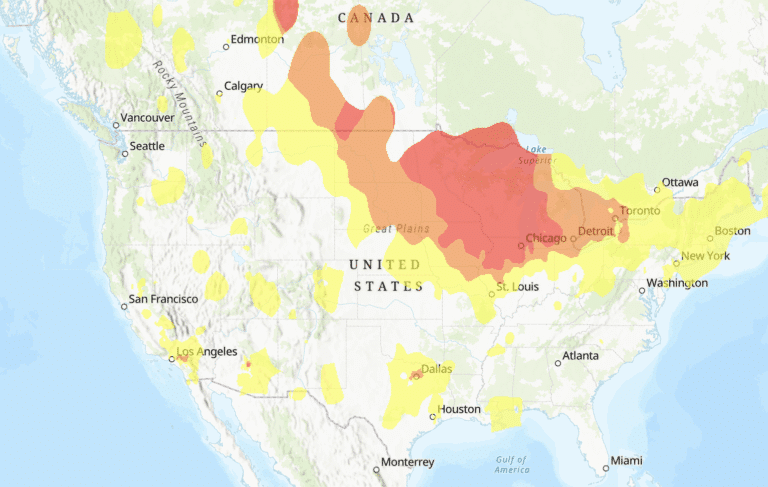Illinois looks nothing like it did 150 years ago and beyond. Only .01% of the Prairie State’s prairies remain.
People, however, can reclaim some of that prairie land — and the insects and wildlife that rely on it — in their yard. “They can be these little repositories to our shrinking natural areas,” says Mary Fortmann, landscape ecologist with non-profit conservation organization Openlands. “Native gardens support biodiversity, support valuable ecosystems.”
Just keep in mind that native gardens differ from pollinator gardens. “Lots of bees are pollinators, but they’re not all native,” Fortmann says. “The native pollinators are what’s so critical and what we’re losing.”
Native gardens benefit people and planet, with plants that have adapted to a specific region — its wildlife as well as its climate and landscape — over thousands of years. In Chicago, the roots of prairie plants, for example, dive deep beneath the soil, stabilizing the land against floods and soaking up water from far underground during droughts. These plants sustain local ecosystems, feed the insects and birds that protect crops from disease, and nourish people, too.
“In some Native languages, the term for plants translates to ‘those who take care of us,’” writes Robin Wall Kimmerer, a scientist, member of the Citizen Potawatomi Nation, in the book Braiding Sweetgrass.
Taking care translates to medicine, too. Native people have used the region’s plants for medicinal purposes for thousands of years. More recently, scientists have found that the American mayapple — native to the Chicago region — contains a necessary ingredient for some cancer-fighting drugs.
To start your own native garden, consider the following tips:
1. Research plants that are native to your area: Search online for “native plants + your area” to find lists and photos to guide your choices. Local conservation groups are also a great resource, and many garden centers have native plant sections. While you can order native plants and seeds online through sites in your region, connecting locally will give you a chance to talk with people to learn more about what you’re trying to grow.
2. Observe your landscape: Notice throughout the day and seasons which areas of your potential garden get sun and shade. Note where water pools during rainfalls. Map your planting accordingly, with plants that match your space’s natural features.
3. Water frequently in the early months:
No matter the type of plants you’re growing, they all need generous watering as they establish their roots. Pay close attention to the weather, and make sure your new plants are getting water at least every other day.
4. Use plant identifier apps on your phone: These identification tools can help make sure you’re nurturing the plants you want and controlling the weeds and other invasive species that you don’t. Fortmann also suggests that people consider planting native shrubs and trees instead of smaller plants that may be more difficult and time-consuming to keep free of weeds. Shrubs and trees, Fortmann says, are both easier to manage in the home landscape and are “the heavy lifters for wildlife and human health. Trees are carbon-sequestering, air-purifying, and cooling.”
Fortmann is dedicated to the Chicago region’s native plants. She says she sees the young oaks and hickories she’s planted as her legacy. “These trees are for future people and wildlife that will live on this land long after I’m gone,” she says.
Above photos by Katie Scarlett Brandt.
Originally published in the Fall/Winter 2023 print issue.

An award-winning journalist, Katie has written for Chicago Health since 2016 and currently serves as Editor-in-Chief.













